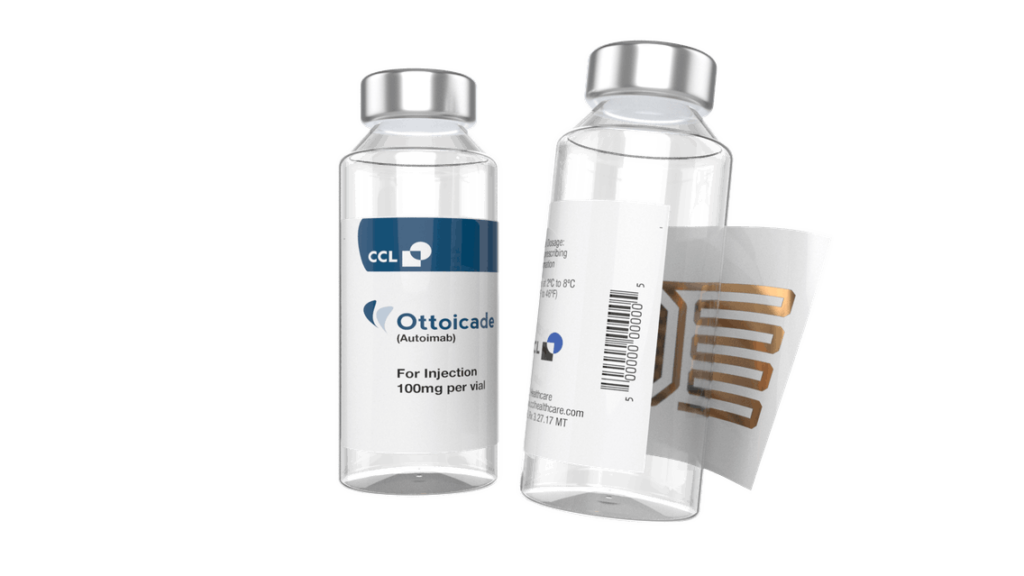What is Radio Frequency Identification (RFID)
RFID stands for Radio Frequency Identification, a technology that uses a microprocessor chip and an antenna to receive RF energy from a reader and transmit information back to the reader. The chip has a UID (Unique Identifier) embedded into the memory that cannot be changed, making RFID an ideal solution for authentication. The chips on RFID inlays have memory that allows the encoding of important information about the products: such as lot and expiration. Depending on the memory requirement, RFID can be used to store the most basic information to thousands of bits of information.
RFID is a perfect solution for brands that want to utilize track and trace, product authentication, medication tracking, inventory management, products that are out of line of sight, and other processes that can benefit from enhance visibility in supply chain and workflow efficiencies, helping to manage costs.
CCL Healthcare has invested in state-of-the-art converting equipment to manufacture dry or wet RFID inlays into finished cGMP labels. Our engineers have designed label solutions and manufacturing processes that has given CCL Healthcare a distinct advantage in the pharmaceutical RFID label market.

Healthcare Applications using RFID
- Asset tracking: RFID tags can be attached to medical equipment and supplies, enabling healthcare facilities to track their location and usage in real-time. This can help improve inventory management, reduce waste, and ensure that critical equipment is available when and where it is needed.
- Patient tracking: RFID tags can be used to track patients’ movements and wait times, helping to identify bottlenecks and improve patient flow. This can help reduce wait times and improve the overall patient experience.
- Medication management: RFID tags can be used to track medications from the pharmacy to the patient’s bedside, ensuring that the right medication and dosage is given to the right patient at the right time. RFID can also be used to track the usage of controlled substances, reducing the risk of diversion.
- Patient identification: RFID wristbands can be used to identify patients and link them to their medical records, helping to prevent errors and improve patient safety. RFID can also be used to track the location of newborns and prevent infant abduction.
- Supply chain management: RFID can be used to track the movement of medical supplies and equipment throughout the supply chain, improving efficiency and reducing waste. This can also help ensure that critical supplies are available when and where they are needed.
- Temperature monitoring: RFID tags can be used to monitor the temperature of medical products, such as vaccines, blood, and organs, during transport and storage. This can help ensure that these products are kept at the correct temperature and are not compromised.
- Staff tracking: RFID can be used to track the movements of staff members, ensuring that they are in the correct location and providing the appropriate care.